3-6 years
6-12 years
Individualized support at school: foundations and practices
November 10, 2025

Individualized support at school: a response to the challenges facing the education system
In a recent note, the Observatoire de l'éducation (Fondation Jean-Jaurès) highlighted the extent to which individualized support at school remains a blind spot in the French education system. At the Esclaibes schools, this individualized approach has always been at the heart of the pedagogical approach. Amanda Ceselia, Pedagogical Director of Esclaibes International Schools, discusses the scientific and practical principles behind this approach, as well as the concrete benefits observed in students.
Individualized coaching and effective learning: the scientific foundations of individual work
Cognitive science research, in particular that of Stanislas Dehaene, a neuroscientist specializing in cognitive psychology, has identified four essential pillars of effective learning
- attention ;
- active engagement;
- return on error ;
- consolidation.
These pillars do not specifically describe individualized support, but they do provide a frame of reference for designing teaching practices that promote the success of all students.
In Esclaibes schools, we integrate the contributions of cognitive science research to rethink work methods, organize individual work and adjust learning to each child.
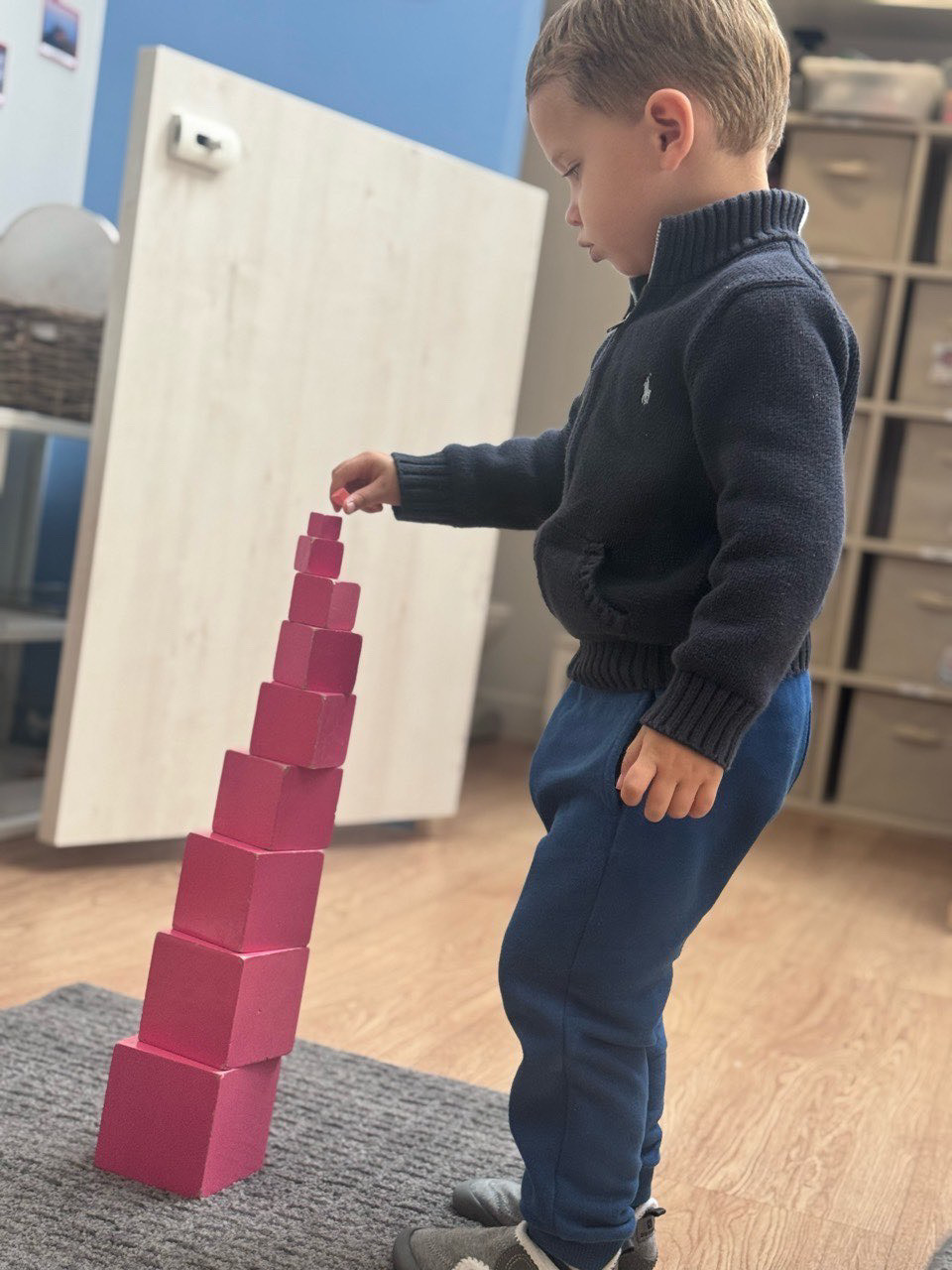
1- Develop intrinsic motivation and focus
We attach the utmost importance to creating an environment that is both secure and stimulating, and which enables children to act autonomously. This balance aims to offer situations that are sufficiently motivating to encourage commitment, without placing the child in difficulty.
According to Vygotski's theory, learning takes place in the " zone of proximal development ", i.e. between what the child can achieve on his own and what he can accomplish with appropriate support. Byclosely observing the child's needs, skills and strategies, the teacher can adjust his or her pedagogical proposals to maintain this balance.
This process of observation, adjustment and differentiation is an essential foundation of our educational approach.
In our schools, concepts are presented to students in the following ways:
- individually in kindergarten;
- then in small groups at the elementary school.
This pedagogical organization aims to optimize the conditions for children's attention. Indeed, it has been shown that human attention and learning processes are closely linked to the social dimension of interaction. This phenomenon, known as divided attention, refers to the child's ability to direct his or her attention according to the social signals emitted by others.
The work of Hungarian psychologists Gergely Csibra and György Gergely has shown that, from the earliest stages of development, a child's attention is strongly influenced by intentional communicative cues from adults. The presence of a human tutor thus constitutes a major modulator of learning, by activating specific cerebral mechanisms for processing social information.
With this in mind, the individual teaching methods implemented in our schools encourage optimal mobilization of the student's attention. They are based on :
- the natural dynamics of joint attention ;
- the cognitive value of interpersonal interactions.
These times of individual presentation are conducive to explicit teaching. This approach completes the pedagogical process by guiding each student, step by step, towards an understanding of the fundamental concepts. Students then practice with guidance before moving on to independent practice.
Educational research has clearly demonstrated theeffectiveness of systematic, step-by-step teaching. In concrete terms, this means that each new notion is first introduced and explained by the teacher, then broken down into simple steps.
The Conseil Scientifique de l'Éducation Nationale (CSEN) sums up this method well:
"explicit teaching is "structured, with clear explanations, demonstrations and practice guided by the teacher"".
This framework allows students to acquire a solid foundation while developing the confidence to tackle more complex tasks.
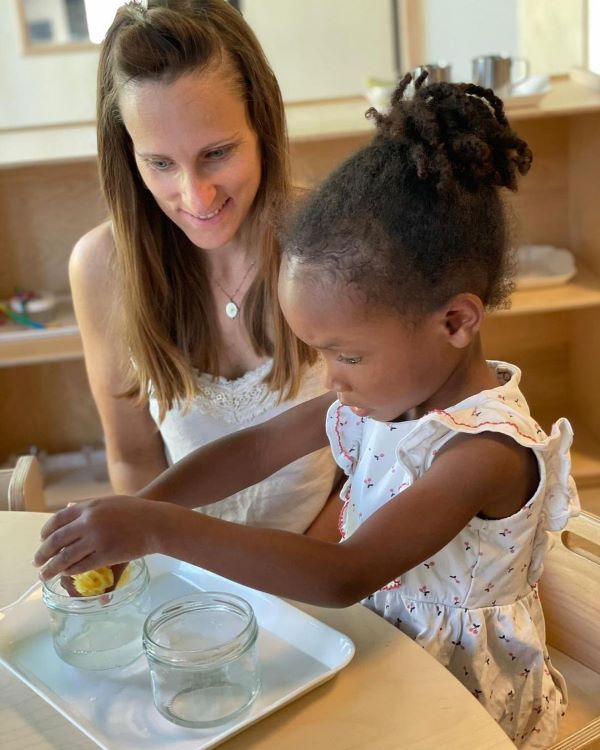
2- Developing the scientific approach and active involvement
In our schools, individual learning begins in kindergarten with research, experimentation and the manipulation of concrete materials. However, this learning alone is not enough: it must be accompanied by essential mechanisms, such as the explicit teaching seen above and the feedback on errors that will be detailed later. Without such support, children would find it extremely difficult to fully master knowledge.
Didactic research confirms that the use ofuse of concrete materials facilitates the acquisition of concepts. These concrete experiences enable children to :
- test hypotheses ;
- see the results of its actions ;
- build a solid mental representation before tackling abstract notions.
Active engagement occurs when the brain is attentive, focused and fully involved in creating mental models. In our classrooms, we prepare the environment and set up varied, stimulating teaching activities that encourage students to think reflectively, hypothesize and test. That's how they learn effectively.

3 - Learning to learn thanks to error feedback
Self-correction plays a central role in the learning process, as it engages the child in an active process of understanding and improvement. In our schools, materials are designed to be self-correcting, offering immediate feedback to the child and signalling the correct path to follow.
Research by American scientists Robert Rescola and Allan Wagner shows that the brain only truly learns when confronted with error. Learning does not simply consist in receiving information, but in formulating a hypothesis, testing it and analyzing the discrepancy between what we expected and what we observed.
Building on this research, Stanislas Dehaene, in his book Learning!- Les talents du cerveau, le défi des machines, explains that the brain functions like a prediction system: it anticipates the results of an action or response
- When the result matches the prediction, the brain confirms the correctness of the reasoning.
- On the other hand, when there is an error, a cognitive alert is triggered: this is the signal that mental representations need to be updated.
This confrontation between prediction and reality is a key moment in the learning process.
In this way, feedback should not be seen as a punishment, but as an opportunity for adjustment. In a caring educational environment, the child learns to identify the origin of his error, to understand its meaning, and then to modify his strategy. This process develops both their self-confidence and their ability to reflect: they are no longer subjected to evaluation, but become actors in it.
Self-correction is therefore conducive to sustainable learning, as it stimulates the cerebral networks of metacognition, i.e. the ability to think about one's own thinking. Feedback helps students understand that error is not a failure, but an essential step in the learning process.
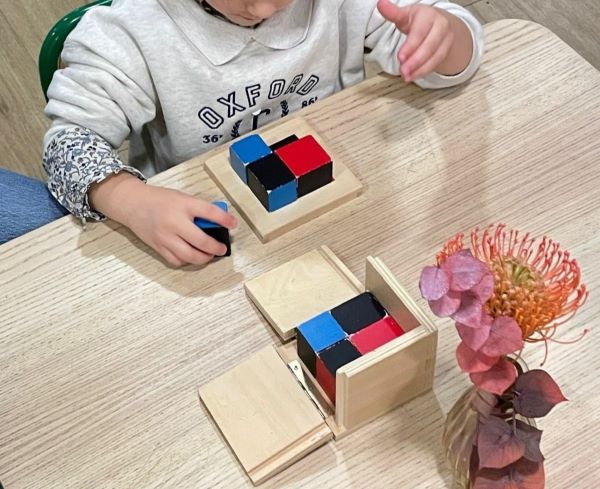
4 - Consolidating learning for the long term
At the start of any learning process, the acquisition of knowledge requires a sustained commitment on the part of the learner. Knowledge is built up gradually, through repetition and over time. The consolidation of knowledge corresponds to the transition from slow, conscious and demanding processing to rapid, automatic and unconscious operation.
In our schools, several systems are in place to support this consolidation process. Each class is organized around the skills specific to each cycle, with no compartmentalization by level. For example, kindergarten classes welcome children aged 3 to 6, while elementary classes group together cycles 2 and 3. This organization enables students to benefit from a stimulating pedagogical continuity and to reinvest concepts already worked on.
From kindergarten onwards, children can repeat an exercise as many times as necessary, encouraging the repetition essential to learning. The teaching material is designed to be progressive. It is reused throughout the school cycle, guaranteeing continuity and consolidation of knowledge.
In addition, numerous routines are introduced to develop autonomy and reinforce learning. In elementary school, individual work plans follow a spiral approach. They enable the concepts covered to be regularly reinvested, while gradually introducing difficulties adapted to the level of each pupil.
The establishment of routines plays an essential role in the development of a child's cognitive abilities. As long as learning is not yet automated, it requires a significant mobilization of attentional and executive resources, which limits the child's ability to concentrate on other tasks or assimilate new information.
The process of learning consolidation, whereby a skill gradually becomes automatic, frees up these cognitive resources. This facilitates the acquisition of new knowledge and the development of more complex cognitive functions(Anderson, 2010; Posner & Rothbart, 2007).
Cognitive neuroscience research indicates that automation reduces the load on the prefrontal cortex, involved in executive control and sustained attention. It enables the brain to direct its attention to tasks requiring more complex or creative processing(Schneider & Shiffrin, 1977; Chein & Schneider, 2012).
Routine practices thus play a key role in optimizing learning and helping children to manage their cognitive resources effectively on a daily basis.
Remedial sessions can be set up, enabling students to consolidate their learning by revisiting concepts they have not mastered. Thanks to targeted, differentiated support, they foster understanding, progress and self-confidence.
Tutoring, which complements these times, offers a caring environment where students help each other: peer tutors support their fellow students in reviewing and applying their knowledge. In this way, they reinforce their own skills and cooperation within the group.

Individualized support at school, a concrete reality in our classrooms
In kindergarten, work is mostly individual, as it corresponds to the developmental phase when children need concentration and personal repetition. In elementary school, learning becomes multimodal: depending on the nature of the activity or the social maturity of the pupils, work can be individual or collaborative.
However, monitoring is always individualized: each teacher knows exactly how each child progresses and adapts learning to his or her needs, as we explain in more detail in our article on personalized student monitoring.
This individualization is made possible by :
- for small numbers ;
- working methods and preparation of the environment;
- to the richness of our multi-age classes, which create a dynamic of mutual aid and emulation, and encourage cooperation between children. The younger children observe and learn from the older ones, while the older ones consolidate what they've learned by explaining and coaching their classmates.
Several studies emphasize the importance of this individualization in reducing inequalities: for example, in its September 2025 report, the Fondation Jean-Jaurès education observatory notes that the absence of genuine personalized support "weakens the most vulnerable pupils and deepens inequalities".
Conversely, individualized support, reinforced by small class sizes, is in line with the republican ideal of equal opportunity. Small class sizes enable us to spot early on who needs special support (specialized teaching, time management, differentiated exercises) and to support them without delay.
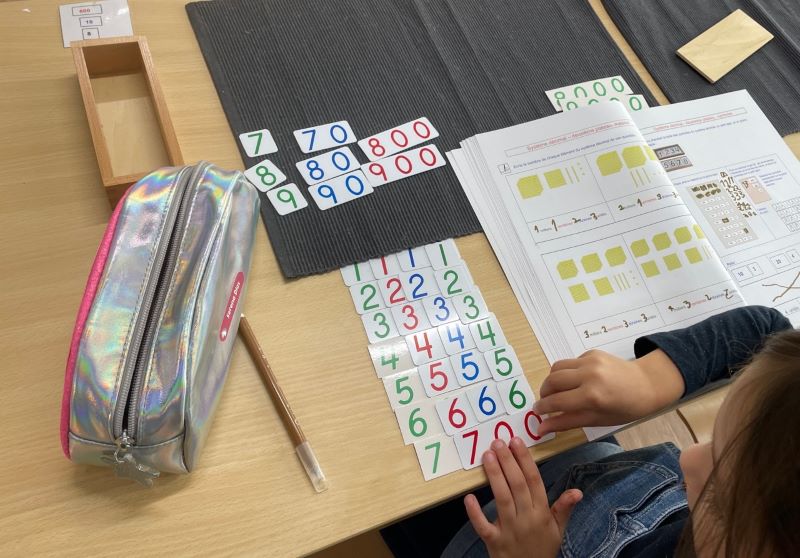
Inspired by educational innovation: the Finnish case
The Finnish model, regularly hailed by PISA as one of the best in the world, emphasizes individualization. Finnish schools often reinvent their spaces (movable partitions, flexible rooms) to help students benefit from tailor-made support.
Teachers make full use of these facilities: by opening up the rooms, they can create small groups for targeted help. Pupils moving freely from one area to another can easily ask for help at the right time, putting into practice the idea of letting each child "push open the door" to support.
An educational approach based on research and trust
These research data show that our approach - hands-on learning, explicit support, self-correction, multi-age classes and personalized coaching - is consistent with effective and innovative teaching practices identified internationally.
Our educational approach, based in particular on individualized support at school, enables each student to progress according to his or her needs and to build genuine intellectual autonomy, while maintaining self-confidence. It is based on scientifically validated principles and aligned with the best foreign experiences, which will certainly benefit our students, as suggested by the note from the Observatoire de l'éducation.
Article written by Amanda CeseliaEducational Director of the Esclaibes International Schools network

5
Campus
+20
Nationalities
2
Teachers per class of 18 pupils
+300
Families place their trust in us

Want to give it a try?
Would you like to offer your child the opportunity to develop in one of our international schools? It's possible to book a tour of our facilities.
.svg)
OUR BLOG
You may also like

3-6 years
6-12 years

8 minutes
November 10, 2025
Individualized support at school: foundations and practices
In our schools, we draw on research in the cognitive sciences to offer learning adapted to each student.
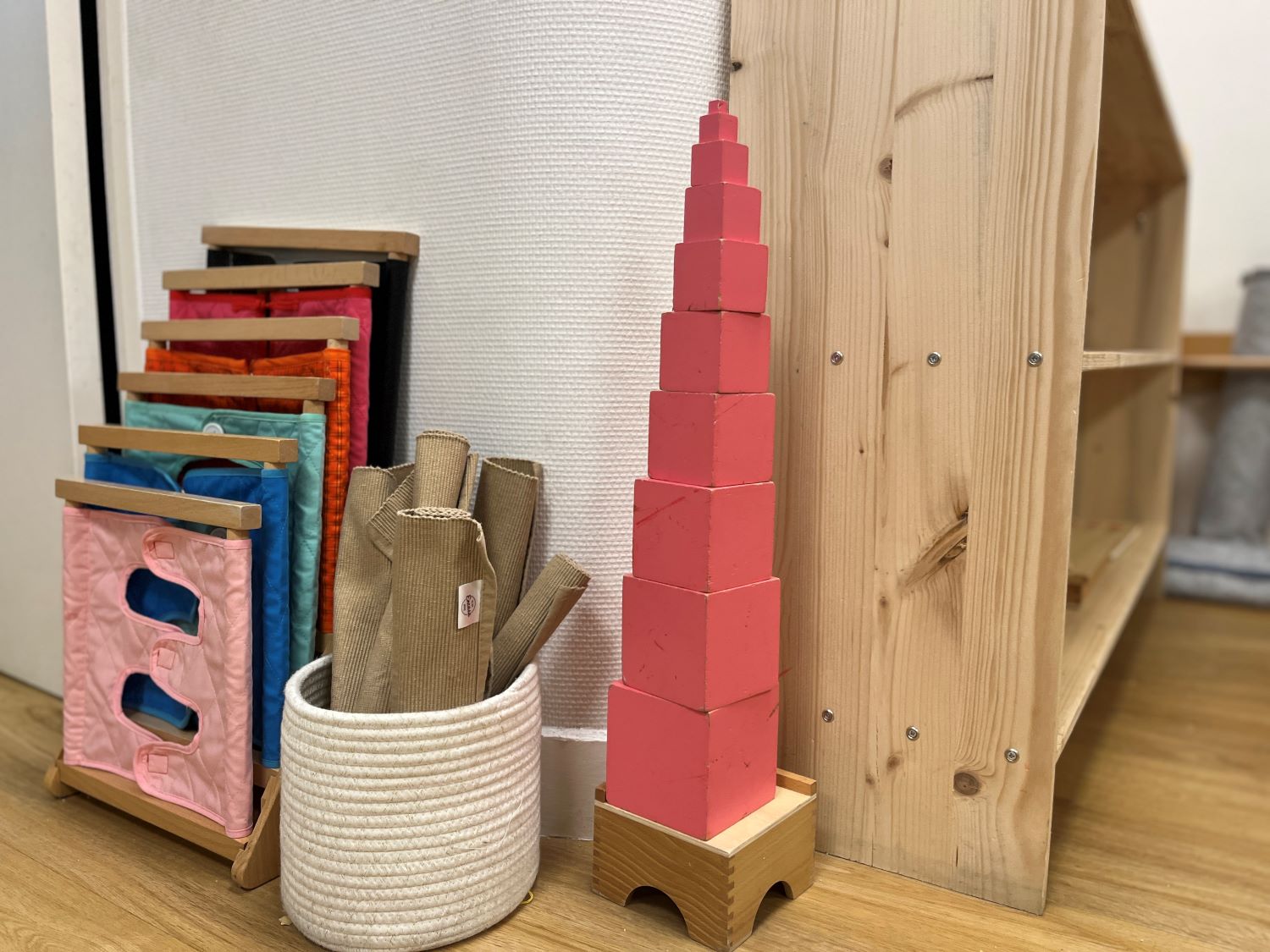
3-6 years
6-12 years
Montessori

4 minutes
September 9, 2025
Montessori: 6 preconceived ideas to deconstruct
Untangle the truth from the false and understand Esclaibes Schools' pedagogical vision.

0-3 years
3-6 years

12 minutes
September 5, 2025
Helping children sleep
From trust to good rituals, advice from two sleep consultants

.svg)


.jpg)
.svg)
.svg)
.svg)
.svg)
